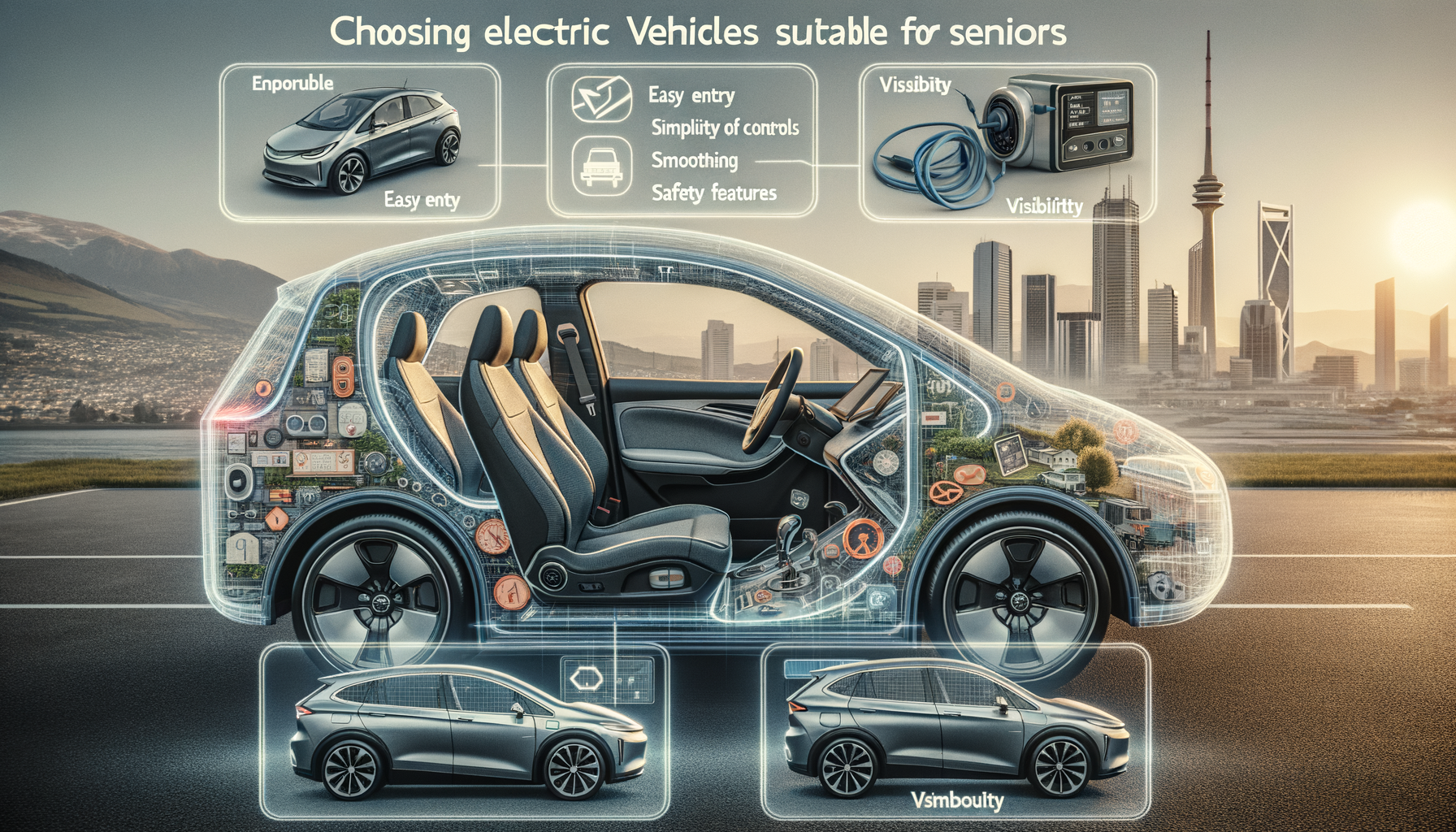Understanding the Needs of Seniors
When it comes to selecting an electric vehicle (EV) for seniors, understanding their unique needs is paramount. Seniors often prioritize comfort, ease of use, and safety over other features. An ideal EV should offer a smooth driving experience with minimal physical strain. Features such as adjustable seating, easy-to-read dashboards, and intuitive controls are highly valued. Additionally, seniors may appreciate advanced safety features like lane departure warnings, automatic emergency braking, and rearview cameras, which enhance their driving confidence.
Another crucial aspect is accessibility. Seniors may benefit from vehicles with higher seating positions, which make getting in and out easier. Electric vehicles with spacious interiors and ample legroom can also provide added comfort for longer journeys. Moreover, the vehicle’s range and charging infrastructure should be considered, as seniors may prefer options that require less frequent charging and offer convenient access to charging stations.
Evaluating Performance and Range
Performance and range are critical factors when choosing an electric vehicle. Seniors often look for a vehicle that provides a reliable and efficient driving experience. Electric vehicles are known for their quiet operation and instant torque, which can make driving more enjoyable. However, the range is a significant consideration, as it dictates how far the vehicle can travel on a single charge.
For seniors who primarily use their vehicle for local errands or short trips, a model with a moderate range may suffice. However, those who enjoy longer road trips or live in areas with limited charging infrastructure might prefer a vehicle with an extended range. It’s essential to balance the range with the charging options available, ensuring that the vehicle can be conveniently charged at home or at nearby public charging stations.
Additionally, seniors should consider the vehicle’s charging time. Fast-charging capabilities can be a significant advantage, reducing the time spent waiting for the vehicle to charge. Evaluating these performance aspects can help seniors select an electric vehicle that aligns with their lifestyle and travel needs.
Exploring Cost and Maintenance
Cost and maintenance are vital considerations for seniors when choosing an electric vehicle. While the initial purchase price of an EV can be higher than that of a traditional gasoline-powered vehicle, the long-term savings can be substantial. Electric vehicles generally have lower operating costs due to fewer moving parts and reduced maintenance requirements. Seniors can benefit from these savings, as they may be on a fixed income.
When considering cost, it’s important to factor in potential incentives and rebates available for electric vehicle purchases. Many governments offer financial incentives to encourage the adoption of EVs, which can significantly reduce the overall cost. Additionally, the cost of charging the vehicle should be considered, as it can vary depending on the local electricity rates and charging habits.
Maintenance is another area where electric vehicles shine. With fewer components that require regular servicing, such as oil changes and exhaust systems, EVs can be more economical to maintain. This can be particularly appealing to seniors who prefer a low-maintenance vehicle. Understanding the total cost of ownership and the potential savings can help seniors make an informed decision when selecting an electric vehicle.
Assessing Safety Features
Safety is a top priority for seniors when choosing an electric vehicle. Modern EVs often come equipped with a range of advanced safety features that can enhance the driving experience and provide peace of mind. Features such as adaptive cruise control, blind-spot monitoring, and automatic emergency braking are becoming standard in many models, offering added protection on the road.
Seniors should also consider vehicles with robust crash test ratings and comprehensive safety packages. These features not only help prevent accidents but also minimize injury in the event of a collision. Additionally, the availability of driver-assistance technologies, such as parking sensors and 360-degree cameras, can make maneuvering in tight spaces easier and safer.
It’s essential to test these features during a test drive to ensure they meet personal preferences and needs. Understanding the safety capabilities of an electric vehicle can contribute to a more secure and confident driving experience for seniors.
Considering Comfort and Convenience
Comfort and convenience are key factors that seniors should consider when selecting an electric vehicle. The interior design and amenities can greatly influence the overall driving experience. Features like heated seats, climate control, and adjustable steering wheels can enhance comfort, especially during longer journeys.
Convenience features such as keyless entry, power-operated doors, and user-friendly infotainment systems can also add to the vehicle’s appeal. Seniors may appreciate technology that simplifies the driving experience, such as voice-activated controls and smartphone connectivity, which allow for hands-free operation.
Additionally, the vehicle’s cargo space and storage options should be evaluated, particularly for seniors who may need to transport mobility aids or other equipment. A well-designed interior that prioritizes comfort and convenience can make a significant difference in the enjoyment and usability of an electric vehicle for seniors.








